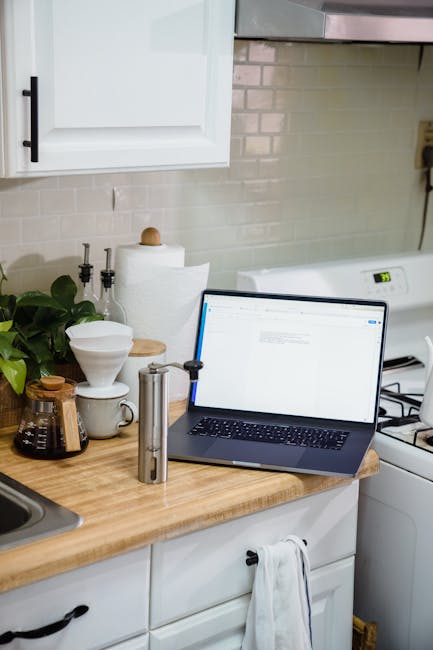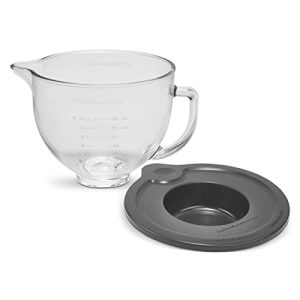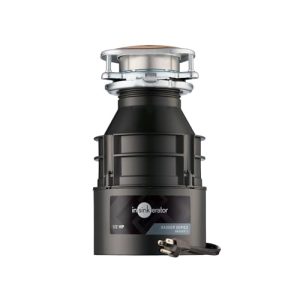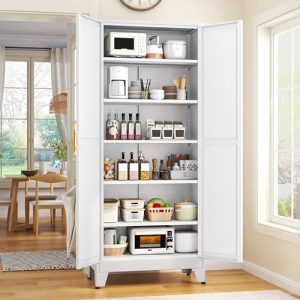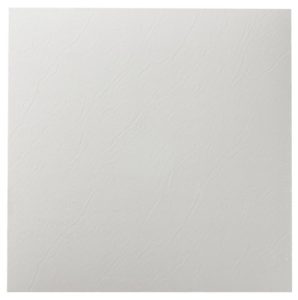Your Kitchen Aid coffee maker is your daily companion for that perfect cup of coffee. But have you ever thought about how clean it really is?
Over time, coffee oils and mineral buildup can affect the taste and performance of your machine. Cleaning it properly not only keeps your coffee tasting fresh but also extends the life of your coffee maker. You’ll discover simple, step-by-step methods to clean your Kitchen Aid coffee maker quickly and effectively.
Keep reading to make every cup better than the last.
Gather Cleaning Supplies
Gather all necessary cleaning supplies like mild detergent, soft cloths, and a small brush. Having these ready makes cleaning your Kitchen Aid coffee maker quick and easy.
Gathering the right cleaning supplies is crucial for maintaining your Kitchen Aid coffee maker. This ensures a thorough clean, keeping your coffee tasting fresh every day. Proper cleaning prevents the buildup of residues and bacteria. Let’s explore the essential tools and materials you need, along with choosing the right cleaning solution.Essential Tools And Materials
To clean your coffee maker effectively, gather some basic tools. A soft cloth is great for wiping surfaces without scratching. A small brush helps reach tight spots. You’ll also need a sponge for scrubbing and a container for mixing solutions. These items are easy to find at home or in local stores.- Soft cloth
- Small brush
- Sponge
- Container
Choosing The Right Cleaning Solution
Selecting the right cleaning solution is important for safety and efficiency. White vinegar is a popular choice for descaling. It’s effective and environmentally friendly. Mix it with water for best results. Alternatively, consider using a mild dish soap. It’s gentle yet powerful for cleaning the carafe and other parts. Avoid harsh chemicals that may damage your coffee maker. Always check the manufacturer’s instructions for guidance.- White vinegar
- Mild dish soap
- Water
Prepare The Coffee Maker
Preparing your Kitchen Aid coffee maker for cleaning is an important first step. It helps prevent damage and ensures thorough cleaning. Taking time to prepare makes the process smooth and safe.
Unplug And Disassemble Parts
Always unplug the coffee maker before cleaning. This stops any chance of electric shock. Next, remove all detachable parts like the carafe, filter basket, and water reservoir. Take care with small pieces to avoid losing them. Disassembling allows you to clean every part properly.
Remove Coffee Grounds And Filters
Throw away used coffee grounds from the filter basket. Dispose of old paper filters too. If you use a reusable filter, rinse it under warm water to clear leftover grounds. Cleaning out these parts prevents clogs and keeps your coffee tasting fresh.
Clean Removable Components
Cleaning the removable parts of your Kitchen Aid coffee maker keeps your brew tasting fresh and extends the machine’s life. These components catch coffee oils and residues that can affect flavor and clog the system. Taking a few extra minutes to clean them thoroughly makes a noticeable difference in every cup you pour.
Wash The Carafe And Filter Basket
Start by rinsing the carafe with warm water to remove leftover coffee. Use a mild dish soap and a soft sponge to scrub the inside gently. Avoid harsh abrasives that can scratch the glass or plastic and trap bacteria.
The filter basket often collects coffee grounds and oils that can build up quickly. Remove it and rinse under running water. If you notice stubborn stains, soak it in warm, soapy water for 10-15 minutes before scrubbing gently.
Soak And Scrub Small Parts
Your coffee maker includes small parts like the showerhead and detachable lids that need attention too. Soak these pieces in a solution of equal parts white vinegar and water for about 20 minutes. This breaks down mineral deposits and coffee oils that regular washing might miss.
After soaking, use a soft brush or toothbrush to scrub any crevices. Rinse thoroughly to remove vinegar residue. Do you often skip cleaning these tiny parts? They can harbor buildup that impacts the taste and performance of your machine.
Descale The Machine
Descaling your Kitchen Aid coffee maker is essential for smooth performance. Over time, minerals build up inside the machine. This can affect the taste of your coffee and slow down brewing. Regular descaling removes these deposits and keeps your coffee maker in top shape.
Mixing The Descaling Solution
Start by preparing a descaling solution. Use white vinegar or a commercial descaler. Mix one part vinegar with two parts water in a clean container. Avoid using harsh chemicals that can harm your machine. Pour the solution into the water reservoir of your coffee maker.
Running The Descale Cycle
Turn on your coffee maker and begin the brew cycle without adding coffee grounds. Let the machine run halfway, then pause it. Allow the solution to sit inside for about 30 minutes. Resume the cycle and let it finish. Afterward, run two full cycles with clean water to rinse out any residue.
Rinse And Flush
Rinsing and flushing your Kitchen Aid coffee maker is essential for a clean brew. This step removes leftover cleaning agents and coffee oils. It helps keep your machine fresh and tasting great every time.
Running Fresh Water Cycles
Fill the water reservoir with clean, fresh water. Run the coffee maker as if you are brewing coffee but without adding coffee grounds. Let the water flow through the machine completely. This process rinses out any cleaning solution inside the system.
Repeat this fresh water cycle two to three times. Each cycle reduces the chance of cleaning residue. It also refreshes the internal parts of the coffee maker.
Ensuring No Residue Remains
Check the water that comes out after rinsing. It should be clear and free of any taste or smell. If you detect any cleaning solution, run another fresh water cycle. Make sure the coffee maker’s internal tubes and filters are fully flushed.
Wipe down the exterior and removable parts with a damp cloth. Let all parts dry before using the coffee maker again. Clean water cycles protect your coffee flavor and machine longevity.
Clean The Exterior
Cleaning the exterior of your Kitchen Aid coffee maker keeps it looking fresh and working well. Dirt, dust, and coffee splashes can build up over time. Regular wiping stops stains and grime from settling. A clean surface also helps your kitchen look tidy and inviting.
Wiping Down The Surface
Use a soft cloth dampened with warm water to wipe the outside. Avoid harsh chemicals that can damage the finish. Pay special attention to areas around the base and sides where spills often occur. Dry the surface with a clean towel to prevent water spots.
Cleaning The Display And Buttons
Dust and fingerprints can make the display hard to read. Gently wipe the screen with a microfiber cloth. For buttons, use a slightly damp cloth to remove dirt. Avoid getting water inside the buttons to prevent damage. Keep the controls clean to ensure smooth operation.
Reassemble And Test
After thoroughly cleaning your Kitchen Aid coffee maker, it’s time to put everything back together and ensure it works perfectly. This stage is crucial because even a small misalignment can affect the brewing process or cause leaks. Paying close attention while reassembling will save you from future hassle and guarantee a fresh, delicious cup every time.
Putting Parts Back Together
Start by carefully placing each cleaned part back in its original spot. Make sure the filter basket fits snugly and the water reservoir is securely attached. If your machine has removable drip trays or carafes, double-check they click or sit firmly in place.
Remember, forcing parts can cause damage, so if something doesn’t fit easily, pause and re-examine it. You might find a clip or groove that you missed the first time. Have you ever struggled with a stubborn piece only to realize it was upside down?
Running A Test Brew
Once everything is assembled, run a test brew using just water—no coffee grounds yet. This helps flush out any leftover residue and confirms that the machine is functioning properly. Keep an eye on the water flow and listen for any unusual sounds.
If water leaks or the brew cycle stops abruptly, turn off the machine immediately and check your assembly. Testing this way prevents wasting coffee and lets you fix problems early. How often do you think about running a water-only cycle to maintain your coffee maker’s health?
Maintenance Tips
Keeping your Kitchen Aid coffee maker in top shape ensures every cup tastes just right and extends the life of your machine. Maintenance isn’t just about cleaning after use; it’s about setting habits that prevent problems before they start. Let’s look at practical tips that make maintenance simple and effective.
Regular Cleaning Schedule
Set a cleaning routine that fits your coffee habits. After each use, wash removable parts like the carafe and filter basket with warm, soapy water. This prevents leftover coffee oils from affecting flavor.
Once a week, run a cycle with just water to flush out any loose grounds or residue inside the machine. Monthly, use a descaling solution or a mixture of vinegar and water to remove mineral buildup. This keeps your coffee maker running smoothly and your coffee tasting fresh.
Preventing Build-up
Mineral deposits and coffee oils can build up quickly if you don’t stay on top of cleaning. Use filtered or bottled water to reduce mineral deposits from hard tap water. Have you noticed your coffee maker slowing down or the coffee tasting bitter? It might be time to descale.
After brewing, always empty the water reservoir and dry it out to avoid stagnant water, which can cause mold. Keep the coffee maker in a clean, dry spot to minimize dust and grime accumulation. These small steps prevent bigger problems and save you time in the long run.
Frequently Asked Questions
How Often Should I Clean My Kitchen Aid Coffee Maker?
Clean your Kitchen Aid coffee maker every 1-3 months. Regular cleaning prevents buildup and maintains brewing quality. If you use it daily, monthly cleaning is best for optimal performance and taste.
What Is The Best Method To Descale Kitchen Aid Coffee Maker?
Use a descaling solution or equal parts water and white vinegar. Run a brew cycle without coffee grounds. Follow with two cycles of fresh water to rinse and remove residue.
Can I Use Dish Soap To Clean The Coffee Pot?
Yes, mild dish soap and warm water effectively clean the coffee pot. Avoid harsh detergents or abrasive scrubbers that may damage the surface. Rinse thoroughly to remove any soap residue.
Is It Safe To Clean Removable Parts In Dishwasher?
Most removable parts, like the filter basket and carafe, are dishwasher safe. Check your model’s manual for specifics. Hand washing is recommended for delicate components to prolong their lifespan.
Conclusion
Regular cleaning keeps your Kitchen Aid coffee maker working well. Use simple steps like descaling and rinsing often. Clean parts prevent bad tastes in your coffee. Taking time to clean also helps your machine last longer. A clean coffee maker means better coffee every day.
Keep it fresh, keep it simple, and enjoy each cup. Your effort pays off with great coffee at home.

Sophie Hartwell is the founder of KitchenQuik.com, where she shares kitchen tips, smart cooking hacks, and the best product picks to make everyday cooking easier and more enjoyable.
